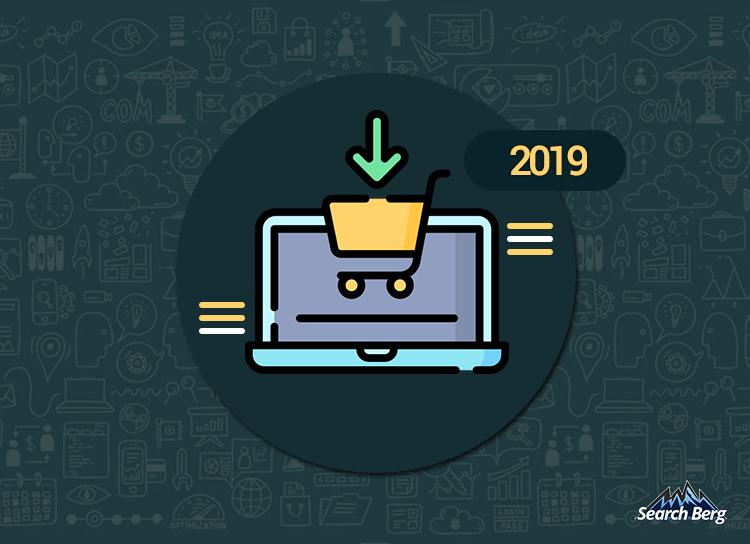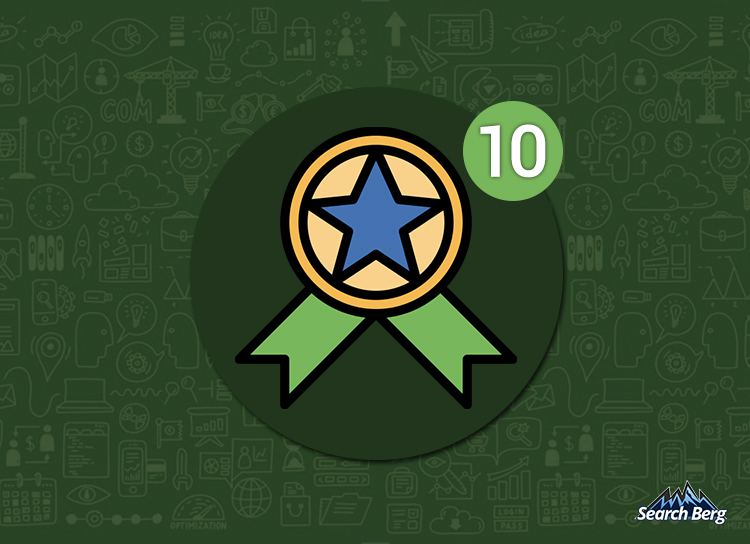In an era that’s dominated by smartphones and small screens, you’d be inclined to think publishing concise content pieces, like 400 word blog posts, would be the smartest choice, right?
However, the fact is that everyone—from giant corporations to budding startups—is relying on long-form content to aid them in their quest to top SERP rankings.

But, why have power blogs become so popular all of a sudden? What’s their significance in digital marketing?
Most importantly, what even is power blogging, AKA long-form blogging? Just how many words is good for a blog?
Power blogging is essentially blogging in such a way that you become an authority in your niche. Using this model, not only do you introduce your audience to an important issue they will face, but you walk them through how to handle it.
These are generally longer and more in depth as far as blog posts go.
They establish you as an authority in your niche by presenting you as someone who’s got the solutions for pressing concerns.
At the end of the day, your ultimate objective with any form of content marketing (including long-form power blogging) is to engage potential consumers, generate leads, and ultimately convert them into sales.
This does not happen easily, and you need to invest a considerable amount of time, effort, and research into it.
Content marketing is not just stringing together a handful of long paragraphs and clicking the ‘publish’ button. There’s much more depth to it than that.
How successful your content depends upon a multitude of factors – and in this realm of marketing, size matters.
Power blogs and other types of long-form content pieces are generally able to perform better than their shorter counterparts. Furthermore, power blogs provide a myriad of content marketing benefits, including:
- Improved online visibility
- Enhanced link building
- Increased social sharing
- More website and domain authority
Of course, these are all the primary objectives businesses are trying to achieve with content marketing.
So, it’s pretty evident that long-form content and content marketing are a perfect fit.
If you’re still not convinced about integrating power blogs in your 2021 content marketing strategy, here’s an in-depth look at the benefits of power blogs and how they can add value to your digital marketing efforts.
Improved Online Visibility through Better SERP Rankings
SERPIQ performed a study on the relationship between post length and SERP ranking, and it revealed some eye-opening facts. For instance, the data showed that SERP rank changed with the length of the content.
The websites found at the top of the rankings had posts above 2,000 words.
Putting aside the SERP ranking benefits of long-form content, engaging power blogs are also a great way to establish your brand as a thought leader or an authority within your industry or domain.
And of course, we know that a good brand reputation adds to the value and credibility of the content, which consequently helps you achieve the inherent objective of content marketing: drawing in organic traffic.
Moreover, studies have revealed that blog posts with a word count exceeding 2,500 naturally garner the most backlinks.
And yes, there’s not much you have to do in order to acquire backlinks. If your blog posts are fresh, unique, and deliver exceptional value, it will naturally generate a higher amount of backlinks.
Incorporating a greater number of quality backlinks into your content also becomes more streamlined the longer your content piece is.
It essentially allows search engines to give greater weightage to your content based on the relevant links you reference on your page.
In this way, Google will reward users who have a greater amount of backlinks on their target keyword or keyphrase than similar content with lower amounts of backlinks within the text.

This linking helps the link building endeavors of the publishers who have posted the interlinked articles, and to enhance their linking efforts, they share the parent article further on social media.
Moreover, power blogs that are rich with information or detailed analysis naturally persuade people to share them.
People are naturally inclined to share stuff they find trustworthy or useful on social media.
Furthermore, virtually every blog post these days is accompanied by a social media sharing option that facilitates sharing and linking of the post.
Search Engine Optimization companies have performed research on more than a million articles and discovered that long-form content, such as power blogs, not only consistently get higher average links but also significantly higher average social media shares.
Power blogs allow you to make your content more interesting and engaging, and if you create content that’s best in your domain, the readers will naturally share it.
The entire purpose of content marketing is to make your audience go “wow!”–and helpful, comprehensive blog posts can make it a lot easier to achieve that wow factor in your blog post.

Search Engines Love High Quality, Longer Form Power Blogs
Another reason it is crucial to improve your visibility on SERP is that Google literally said that it has a preference for this kind of content.
In 2012, when Google incorporated their Penguin and Panda updates to the search algorithm, they made it clear that they would focus on quality content. To this end, they encouraged users to create longer and high-quality content in order to reach and maintain their rankings on the SERP.
They are even updating their algorithm so that it does not favor and, in fact, demotes “thin” content.
Google wants the fat lady to sing and not the thin lady to whisper.
So if your goal is to rank on your respective keyword’s SERP, make sure your blog is packed with useful information, relevant links and is within the confines of long-form content rather than short form.
Since they have a high word count, power blogs allow you to integrate as many keywords across the content as you want.
However, the Google bot is notorious for having a microscopic eye for quality. Your power blogs will be absolutely useless if their quality is anything other than excellent.
The content-based website, BuzzFeed, is a prime example of the effective way to utilizing power blogs and long-form content. It features tons and tons of detailed articles from the real world and all over the web, which is why it’s a brand that customers trust and love to spend their time on.
Another fine example is the popular global news reporting agency, the Guardian.
Similar to BuzzFeed, the Guardian benefits from a high rate of social-sharing of its long-form content on social media. It has firmly established rock-solid industry credibility and has millions of followers.
Create Better Reader Value
Perhaps the most important advantage of power blogging is that it allows you to create amazing value for your readers. When you publish power blogs, your readers tend to get more than they came for in the first place.
Put simply, longer blogs packed with useful and helpful information shows your readers that you are coming from a place of immense knowledge.
While you may have researched everything in your blog as little as a day before writing it, it doesn’t matter.
This is because the impression that your blog gives off is that of immense knowledge and research. Regardless of your own timeline of obtaining this knowledge, the power blog you created is still a result of the work that you put in to create this resource for your audience.
They will be grateful.
For instance, take the case of Motor Trend, an extremely popular automotive website that publishes detailed power blogs on the going-ons in the automotive industry that go viral. Millions of automotive enthusiasts and consumers visit Motor Trend’s website because they get more reliable information and trusted insights than they would anywhere else on the web.
Their power blogs and long-format articles are so engaging that some of them even manage to get shared more than a million times on social media platforms.
And the allure of power blogs is easy to understand. They just have this amazing ability to keep the reader interested and engaged.
Also, it takes readers longer to read power blogs, which means publishing them increases the average time users spend on your site.
So keep bumping up that word count if you want to increase user engagement.

The content of your power blogs can be punctuated with call-to-action, which can increase the generation of leads, and ultimately, conversions.
With power blogs, you get a vast stretch of space to strategically place call-to-actions, which the reader can click on if they’re interested in one of your services or products.
The popular web analytics service, CrazyEgg, was able to boost its conversion rates by an amazing 30% through the use of power blogs. Their long-form content pieces were able to directly address most of the customer queries without having to redirect them to a variety of pages where the relevant information was strewn about.
What’s key about increasing your engagement is the use of keywords.
In a shorter blog post of, say, 500 words, it is much more challenging to insert the relevant keywords without breaking the conversational flow in a blog or article. Doing so too many times ticks the Google algorithm off and reduces the flow for a reader while doing so too little hurts your chances of ranking.
So in a shorter blog inserting keywords and key phrases is a very delicate dance, but when you have the luxury of long-form content?
It’s so much easier to keep the tone conversational AND insert the keywords you need to.
It’s like dancing in a ballroom as opposed to within the confines of a tiny studio apartment.
Zero comparisons.
In fact, you can even insert multiple keywords, effectively killing more than a couple of birds with one fat well-researched stone.
How to Create Engaging Power Blogs
As we’ve mentioned already, word count isn’t the only factor that determines how successful the blog is. It also needs to be informative and engaging.
A common misconception bloggers and businesses which take advantage of blogging is that your success is determined by the number of visitors you get per month.
This is not true.
In fact, your blogging success is actually determined by the number of visitors that are engaged with and keep coming back to your blog posts.
Having this long-form content approach will help you switch from targeting both high quality focused readers and those mildly interested in the topic to solely those who are invested in the content of your piece.
While your viewers may even go down temporarily, this is a good thing because your audience is becoming more targeted. Therefore, this targeted audience has a greater likelihood of subscribing to your newsletter, sharing your blogs with their network, writing solid and engaged comments.
Ultimately, not only does this benefit your sales funnel, but this targeted engagement also helps your rankings in the SERP.
Focusing on the aforementioned number of comments, subscriptions, etc., is also a much more accurate metric of how you are performing like a brand rather than simply garnering page views.
The following is a step-by-step guide on creating engaging power blogs:
- Find time relevant content ideas: Digging through Google Trends can help you with this endeavor.
Look through the seasonal trends of when certain search terms and events become popular and plan your content calendar accordingly.
For example, if you have a shoe business and certain types of shoe queries become more popular in the winterftime, save your blog post on water and snow proof shoes for around that time of the year.
- Do intensive research, gathering scientific studies and data.
The adage the more, the merrier definitely applies to your audience from a research standpoint because you reduce their need for further resources after reading your blog post.
You can also make use of Google Scholar and Google Advanced Search settings to further enrich your research.
Another hack to finding content that isn’t already available easily on search engines is to read through reputable PDF’s online and paraphrase the content that is relevant to your blog from it.
Using a PDF is good because it’s even more unique to paraphrase the information from a PDF than from another blog post.
- Outline your ideas and create a robust structure for your power blog.
You want to create an outline that helps the reader navigate the main topics that you will discuss.
Having a content page that tells the reader which content is on each page of your blog will really help them navigate it if they need answers to specific queries within your larger blog post.
- Make the initial draft of the blog without any critique.
- Editing and search engine optimization: break long paragraphs and sentences into shorter, more readable sections.
Doing so helps because the average reader’s attention span reduces and becomes more divided each year as time goes on.
Therefore, breaking up larger paragraphs into short and punchy paragraphs and/or one-liners specifically to make your point helps today’s attention-deficit readers follow along.
Staying with you throughout your blog or article, in turn, helps them engage with it and your business meaningfully.
- Add keywords and implement schema markup.
Schema Markup is essentially code that you can put into your web page’s source code, which helps search engines to give users more informative results.
Google uses schema markup to show the users rich snippets when they are searching.
This is something you definitely want for your content when a relevant user is searching for content like yours because it helps your page stand out on the SERP.
You can use schema markup for SEO by using Google’s Structured Data Markup Helper.
- Make your power blog a rich multimedia experience by adding videos and photos.
- Double check for spelling and grammatical errors.
- Publish your power blog and promote the hell out of it.
Conclusion
There’s no doubt that power blogs have what it takes to maximize domain authority, social sharing, and organic traffic. They’re a highly effective digital marketing tool for boosting your conversions through sharing credible information and knowledge.
Power blogging provides several important benefits, including boosting search engine results page rankings, establishing brand authority, and perhaps most importantly, improving conversion rates.
One benefit of power blogging we didn’t mention is that it is evergreen. Thanks to social sharing, the content will stay in rotation on popular platforms for a long, long time. Short-form content, on the other hand, cannot last long because of the restricted amount of information it contains.
However, the most significant advantage of power blogs is that they are higher in quality.
The better question is thus, why shouldn’t you create longer-form content?
Most major search engines, Google included, place a high emphasis on quality, and their algorithms are designed to place high-quality content at the top of SERPs at all times.
If power blogs have not been a part of content marketing strategy until now, it’s never too late to integrate them.
An award-winning digital marketing and small business SEO firm, Search Berg specializes in providing effective blogging and publication services. If you want to get your brand featured on popular platforms, get in touch with our representatives today!

















































